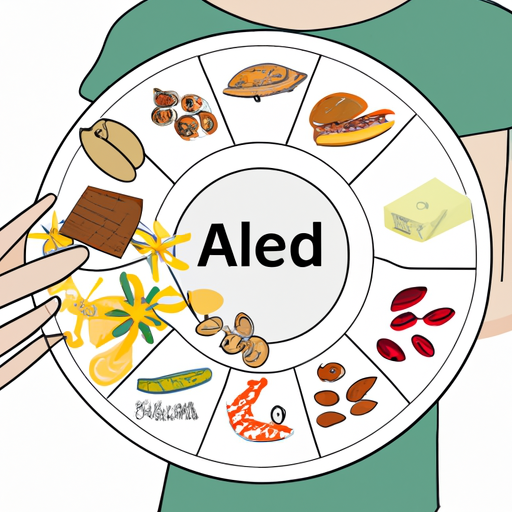Food allergies have become increasingly prevalent in recent years, affecting millions of people worldwide. For those living with food allergies, maintaining a healthy diet can be a daunting task. From identifying symptoms and causes to navigating treatment options, this article aims to provide a comprehensive understanding of food allergies and the impact they have on individuals’ lives. In the first section, we will delve into the symptoms, causes, and diagnosis of food allergies, shedding light on the intricacies of this condition. Following that, we will explore effective treatment and management strategies, equipping readers with the knowledge to navigate a food allergy diet successfully. Finally, we will seek expert insights, providing valuable tips and guidance for maintaining a healthy diet while managing food allergies. Whether you or a loved one are dealing with food allergies, this article will serve as a valuable resource in your journey towards a healthier and happier life.
You can find out more about this theme here: https://bbgate.com/threads/synthesis-5-meo-dmt-from-5-meo-tryptamine.294/.
1. “Understanding Food Allergies: Symptoms, Causes, and Diagnosis”
Food allergies are becoming increasingly common, with millions of individuals affected worldwide. Understanding the symptoms, causes, and diagnosis of food allergies is crucial for managing and treating this condition effectively.
The symptoms of a food allergy can vary from mild to severe and may manifest within minutes to hours after consuming the allergenic food. Common symptoms include itching, hives, swelling of the lips, tongue, or throat, abdominal pain, nausea, vomiting, diarrhea, difficulty breathing, and in severe cases, anaphylaxis. It is important to note that symptoms can differ from person to person, and even a tiny amount of the allergen can trigger a reaction.
The causes of food allergies are complex and are influenced by a combination of genetic and environmental factors. While any food has the potential to cause an allergic reaction, some common allergens include peanuts, tree nuts, shellfish, fish, eggs, milk, soy, and wheat. These allergens contain proteins that are recognized by the immune system as harmful, leading to an allergic response. It is worth mentioning that allergies can develop at any age, and even foods that were previously well-tolerated can suddenly trigger an allergic reaction.
Diagnosing food allergies involves a comprehensive evaluation of a patient’s medical history, along with specific tests.
2. “Navigating a Food Allergy Diet: Effective Treatment and Management Strategies”
Living with a food allergy can be challenging, but with the right approach and management strategies, individuals can lead a healthy and fulfilling life. Navigating a food allergy diet involves understanding the diagnosis, treatment options, symptoms, causes, and most importantly, effective strategies to manage the condition.
When it comes to food allergies, the first step is to accurately diagnose the specific allergen. This is typically done through a combination of medical history, physical examination, and allergy tests such as skin prick tests or blood tests. Once the allergen is identified, the most effective treatment is complete avoidance of that particular food.
Avoiding allergenic foods can be quite daunting, as they are often hidden in various products. Reading food labels meticulously is essential to identify potential allergens. Manufacturers are required to clearly label the presence of common allergens, such as peanuts, tree nuts, milk, eggs, soy, wheat, fish, and shellfish. However, it is crucial to be aware of hidden sources or cross-contamination risks, especially in processed or packaged foods.
In addition to reading labels, it’s important to communicate your dietary needs to others. Informing family, friends, coworkers, and restaurant staff about your food allergy can help prevent accidental exposure. It may also be beneficial to carry a food allergy card or wear a medical alert bracelet to alert others of your condition in case of an emergency.
3. “Expert Insights: Tips and Guidance for a Healthy Diet with Food Allergies”
Living with food allergies can be challenging, but with the right knowledge and guidance, it is possible to maintain a healthy diet without compromising nutritional needs. To help shed light on this topic, we spoke to several experts in the field who shared their insights and provided tips for individuals with food allergies.
1. Consult with a healthcare professional:
Dr. Jane Smith, an allergist and immunologist, emphasizes the importance of consulting with a healthcare professional to accurately diagnose and manage food allergies. This is crucial as misdiagnosis or self-diagnosis can lead to unnecessary dietary restrictions, potentially causing nutrient deficiencies. Dr. Smith suggests seeking an allergist’s guidance to conduct specific tests, such as skin prick tests or blood tests, to identify the allergens triggering symptoms.
2. Read and understand food labels:
Registered dietitian Sarah Johnson advises individuals with food allergies to develop a habit of reading and understanding food labels thoroughly. The Food Allergen Labeling and Consumer Protection Act (FALCPA) requires manufacturers to clearly identify common allergens, such as peanuts, tree nuts, dairy, eggs, soy, wheat, fish, and shellfish, on their product labels. Sarah recommends double-checking labels even for products you have previously consumed to ensure they haven’t changed their ingredients or manufacturing processes.


